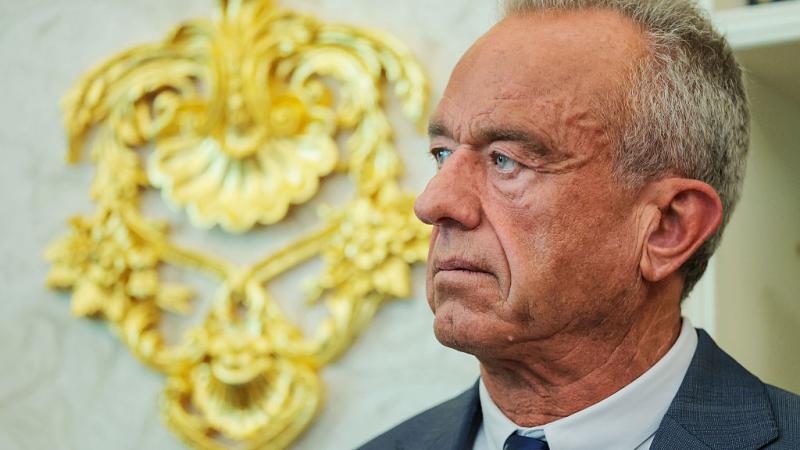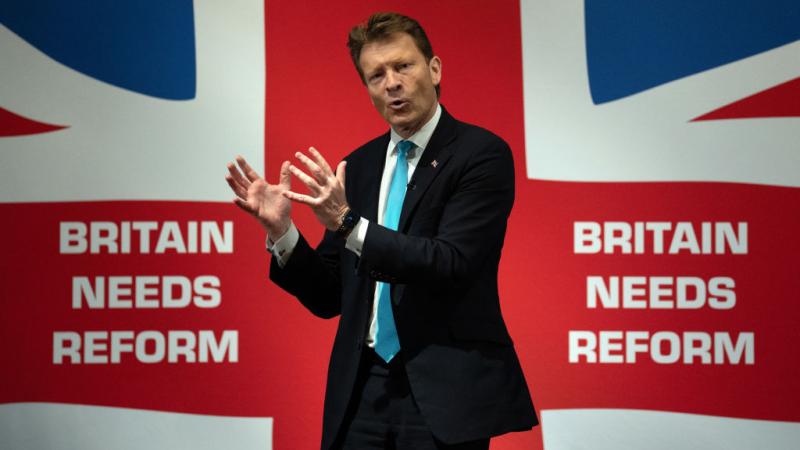COVID con, part 2: How billions in pandemic relief funds went to everything but pandemic relief
Federal money meant to combat COVID-19 instead spent on pension bailouts, critical race theory programs, cash grants to illegal immigrants.
Read part 1 of our COVID con series to see how lax government oversight of COVID-19 relief funds allowed fraudsters to take advantage of the pandemic and rake in cash as small businesses failed.
For the past two years, states and the federal government have spent billions of dollars in COVID-19 relief funds on a wide range of policy programs unrelated to the pandemic, according to a review conducted by Just the News.
The review found that, in numerous cases across the country, local, state, and federal officials used pandemic relief to fund other, often politically contentious spending priorities, such as teacher pay raises and cash grants for illegal immigrants.
One of the most prominent examples came at the federal level, where lawmakers attempted to bail out union pension plans facing possible insolvency.
In March, Democrats included in President Biden's $1.9 trillion American Rescue Plan, which was meant to help the country recover from the health and economic effects of COVID-19, about $86 billion to save private unions' multiemployer retirement funds. The largest of these is the Teamsters' Central States Pension Fund.
Democrats argued at the time that the bailout would keep dozens if not hundreds of pensions solvent for several more years at a lower cost than if Congress acted later. It's unclear, however, why they included the pension cash infusion in a law purportedly meant to combat the pandemic rather than other legislation.
House Speaker Nancy Pelosi (D-Calif.) appeared to offer a partial explanation last year, saying children would be helped by taxpayer funds directed toward struggling union-managed multiemployer pensions, noting the benefits of providing economic security for families.
Critics of the bailout counter that, because it doesn't address the structural problems that caused the pensions to face insolvency in the first place, many of these bailed out retirement plans may need another cash infusion in the not-too-distant future.
Beyond unions, the federal government also sent pandemic relief funds to businesses linked to the Chinese government. In fact, the Treasury Department and the Small Business Administration gave between $192 million and $419 million in emergency U.S. taxpayer funding to at least 125 Chinese firms with links to the Chinese Communist Party, according to the Horizon Advisory strategic consulting group.
Due to negligible government oversight, the money went to the firms by way of the Paycheck Protection Program, which was designed to assist U.S. small businesses that were devastated by the pandemic.
The Treasury Department has also said states and localities can spend COVID-19 relief on infrastructure, expanding access to broadband internet, and modernizing cyber security. Indeed, the department has given them significant flexibility in how they spend their federal pandemic relief funds, indicating the money can go to replacing lost revenue as well as infrastructure. However, the department announced this months after states already submitted their plans for how they would spend COVID-19 funds on these very areas.
Many states said in writing they're allocating nine-figure sums of federal pandemic relief funds on broadband, housing, and other infrastructure projects. Kentucky, for example, is devoting $250 million to water and sewer infrastructure projects across the state, billing them as part of the COVID-19 recovery effort. The Bluegrass State is also including $300 million to expand broadband services as part of its pandemic recovery plan.
Colorado, meanwhile, plans to put $550 million of its federal funds toward affordable housing and home ownership efforts and another $380 million for transportation, infrastructure, parks, and agriculture.
Connecticut, meanwhile, is devoting $7 million to retrofit affordable housing to make homes more energy efficient.
To cite another example, New Jersey, which allocated only 27% of its federal pandemic relief for public health, is devoting millions of dollars for water, sewer, and broadband infrastructure.
New Jersey has also made "equity" a "foundational issue" in its use of federal COVID-19 recovery funds, according to the state's 2021 Recovery Plan Performance Report.
"New Jersey's initial strategy to promote equity for underserved, marginalized, and adversely affected groups has been to provide direct benefits and services to individuals and families who have the greatest and most immediate need as a result of the pandemic," the report states. "For New Jersey, these groups include women, minorities, and the economically disadvantaged."
The Garden State isn't alone in spending pandemic relief funds on promoting equity. In New York, the state Education Department is diverting federal pandemic relief funds to a controversial curriculum which, critics argue, is steeped in critical race theory. The Culturally Responsive Sustaining Education Framework will train students to identify inequities and biases supposedly deeply embedded in the country and in their own lives and to plumb the "root causes of inequity."
New York's public schools have been awarded a total of nearly $9 billion in Elementary and Secondary School Emergency Relief aid from federal pandemic relief programs through the U.S. Department of Education, the bulk of it funded by the American Rescue Plan.
"The notion that New York is diverting funding for a critical-race-theory-focused student training curriculum is patently false," said a spokesman for the New York State Education Department.
Nationwide, schools received $190 billion through three relief packages passed. Of that total, the largest sum, $122 billion, was from the American Rescue Plan. The funds were ostensibly meant to reopen schools safely amid the pandemic and return students to in-person instruction. Millions, however, were used for COVID-19 bonuses, teacher pay raises, and even to cover payroll.
Just the News previously exposed many such examples, including Detroit Public Schools using $60 million of its pandemic relief funds to give out bonuses and Connecticut spending $21.1 million on "personal services-salaries" and $2.6 million on employee benefits.
Beyond school expenditures, Washington state is using $340 million of its pandemic relief to provide one-time cash grants of $1,000 for illegal immigrants, according to the state's Recovery Plan Performance Report. That's in addition to $128 million in funding provided by the CARES Act, another federal COVID-19 relief stimulus, for illegal immigrants last fiscal year.
Several states and cities have also taken advantage of the federal funds to try to put their fiscal houses in order. Connecticut, for example, has allocated $1.75 billion in federal pandemic aid to be used to support "budget balance" for fiscal years 2022 and 2023. Colorado put $1 billion toward fortifying the state budget and maintaining fiscal integrity.
At the same time, New York City, Tulsa, Okla., and Santa Cruz County, Calif. rehired more city workers with COVID-19 funds, spending tens of millions of dollars to do so.
Some states and localities allocated COVID-19 relief to child care, while New Mexico appropriated well over half a billion dollars to replenish its Unemployment Insurance (UI) Trust Fund as well as repay the federal loans issued by the U.S. Department of Labor to support the overwhelming surge of UI claimants during the COVID-19 pandemic.
Proponents of the Treasury Department's more hands-off approach to how states spend federal pandemic relief say states will better address their own needs with less limitations. Others argue that, to avoid misuse of federal funds and wasteful spending, COVID-19 relief should be focused specifically on responding to public health needs and the economic fallout of the pandemic.
These critics have noted that some governments even directed pandemic relief to museums and block parties. Indeed, San Jose, Calif. is spending $12 million to "beautify" the area by installing public toilets and funding block party events. Some of the money is also going to San Joe's National Night Out, murals, community gardens, and other related projects.
San Jose also devoted $3.7 million to an "Environmental Resilience Corp," which will "undertake environmental stewardship projects such as tree planting, defensible space and fuel reduction, biofuel maintenance, and trail maintenance, including community engagement and organizing," according to its Recovery Plan. Another $1.4 million is going to clean up parks.
In Connecticut, Gov. Ned Lamont (D.) last year allocated $15 million to allow children 18 and under plus one accompanying adult to visit museums throughout the state free of charge.
















